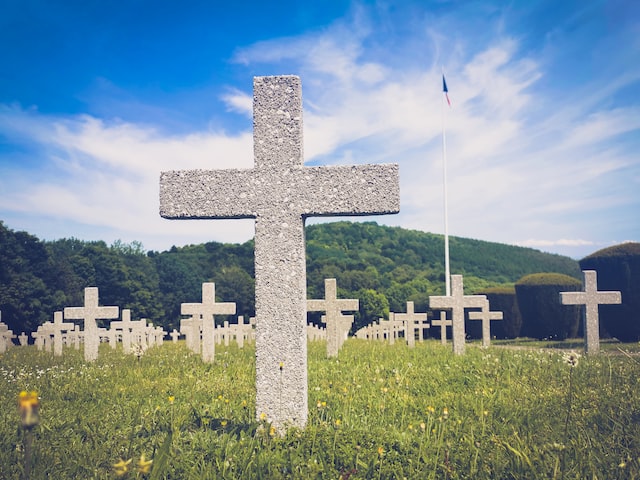
Cemeteries: Their Role in Honoring Veterans
March 11, 2024
The Beauty of Cemeteries in Different Seasons
March 25, 2024In every corner of the world, including at the cemeteries in Windsor, NJ, one can find historical landscapes that go beyond their primary function as final resting places. They stand as a testament to societal practices, evolving cultural ideologies, and the perceptions of the afterlife that changed over time. This article takes a deep dive into the fascinating evolution of cemeteries in sync with the shifting paradigms of life beyond death.
Prehistoric Burial Practices and Beliefs
In prehistoric times, the perception of death was markedly different from what it is today. Death was seen less as an end and more as a transition to another plane of existence. Consequently, burial rituals were often geared towards guiding the spirit of the deceased into the next world. Graves, often marked with simple stacking of stones, were the final resting places of bodies that were interred with personal belongings. These items, it was believed, would aid the deceased in their journey to the afterlife.
Ancient Civilizations and Their Interpretation of Afterlife
As we moved from prehistoric tribal communities to more sophisticated civilizations, the notions about the afterlife also underwent a transformation. The ancient Egyptians, for example, subscribed to an elaborate journey to the afterlife. This belief led to the construction of awe-inspiring structures such as pyramids, which served as tombs for pharaohs. The Romans, on the other hand, were proponents of cremation, with the cremains stored in intricately designed columbariums.
Influence of Christianity and the Rise of Churchyard Burials
The arrival of Christianity heralded a significant shift in the views about the afterlife. Heaven and Hell were introduced as rewards or punishments for deeds committed during one’s life on Earth. This led to a trend of burying the deceased in churchyards, the proximity to the church symbolizing closeness to God and the hopeful promise of resurrection.
 The Victorian Era and the Advent of Garden Cemeteries
The Victorian Era and the Advent of Garden Cemeteries
The Victorian era was instrumental in bringing about substantial changes in the design of cemeteries. Owing to overcrowding, churchyards rapidly gave way to garden cemeteries. These spaces were conceptualized to be serene and park-like, ideal for tranquil contemplation on mortality and the afterlife. This mirrored the romanticized view of death prevalent during this time.
Modern-day Perceptions and the Emergence of Green Burials
In recent times, we see a sea change in the perception of death and the afterlife. Some have veered away from traditional religious beliefs, while others have embraced them more firmly. The emergence of the green burial movement, characterized by environmentally-conscious burial practices, points towards a growing belief in death as a part of the natural life cycle and a return to nature after death.
Digital Age and Memorialization
Today, the digital revolution is rewriting the rules of memorialization and, by extension, our views on the afterlife. Digital memorial platforms, online cemeteries, and social media tributes have gained popularity. The afterlife, in the modern context, is seen as an extension of one’s digital existence.
In conclusion, cemeteries in Windsor, NJ, have undergone a remarkable transformation over the centuries. They evolved in response to our changing views on the afterlife. They serve not only as spaces for remembrance but also as mirrors reflecting our collective consciousness about life, death, and the mysteries beyond. Should you wish to delve deeper into the evolving practices and options available today, we encourage you to learn more about our services at the Princeton Memorial Park & Mausoleum.




